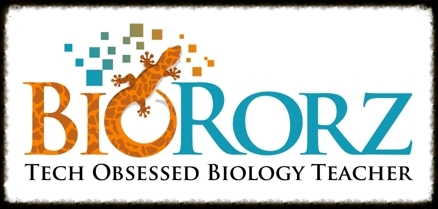Going back to Kindergarten
I read a post by Daniel Pink the other day and he mentioned a quote from Albert Einstein. "If you can't explain it to a six-year-old, you don't understand it yourself." This couldn't have showed up at a better time because just the night before, my friend who teaches kindergarten was telling me about her class unit on wheat that was going to culminate in baking bread. Coincidentally, my 11th grade IB biology class is studying cellular respiration at the moment and we had just finished going over anaerobic respiration, specifically the mechanisms involved in alcoholic fermentation of yeast. The following class period, I needed to go into detail with my higher level students about the Kreb's cycle and electron transport, and I was looking for an engaging activity for my standard level students to do while I was working with the HL students.
A couple of glasses of wine later, we decided that we would do a joint project between my SL students and her kindergarten students. Instead of just baking bread, we turned her class into an entire day of scientific experimentation to assist the big kids in their research.
In class the next day, I gave my SL students the task of performing two experiments and making a video for 5 year olds to explain how "gas" is produced when you put yeast into warm water and feed it sugar. Their video was broken down into the following parts:
- a screencast explanation of yeast as a living organism
- an experiment showing the gas production of yeast with sugar using the color change of bromothymol blue.
- the same experiment showing that the air we breathe out is the same gas that is produced by yeast
- an explanation of the experiment they needed to kindergarteners to do to help them with their research.
My students asked the kindergarten to find out how the temperature of water (ice water, room temperature, warm water, and boiling water) affected the amount of gas produced by the yeast by measuring the height of the dough before and after it rose.
So instead of just baking bread, the kindergarten did the following things:
- repeated the experiment with breathing into a test tube with bromothymol blue.
- blew up a balloon with yeast and sugar.
- turned their bread baking into an engaging science experiment that helped to introduce their measurement unit
- looked at live yeast under a microscope
As a follow up, the kindergarten students are sending their data to my students so that they can make a graph out of it and a short video explanation about what they learned from this whole experience.
Doing this whole project via video was crucial to the success of this collaborative effort. In the past, I have avoided doing these types of activities for two main reasons. The first and biggest barrier is time. We all know that it is hard to time these activities so that two classes are studying similar topics at the same time allowing for this to occur in the same physical space. The second is the thought of unleashing high school students on 5 year old children unedited. By using video as our means of communication, the kindergarten class was not bound by the scheduling of this unit in IB. Though it was convenient that they were baking bread the following week, it could have just as easily taken place a month after my students made the video. The second benefit of using video is that we were able to edit the video and use screencasting software to ensure effective communication. The kindergarten teacher was also able to pause the video, repeat information, and for lack of a better word, translate the video for her students.
My takeaways:
- By challenging my students to explain and demonstrate anaerobic respiration in terms that a 5 year old can understand, they have synthesized the information that they were required to learn in a fun and engaging way.
- The kindergarten class had and I quote, "an awesome day for learning....Awesome!".
- I love Screen Flow! :-)
Here is a link to the video response from kindergarten. Video is totally worth the watch!
If you are interested in screencasting, I use the following software/tools to make my screencasts:
- Screen Flow (Mac)
- Omnidazzle (for writing on the screen)
- iPhone for recording video (though any camera would do)
- Bamboo tablet (for writing on the screen)
- Keynote (for presentations)
My bio crush, Paul Andersen, does a great job explaining how to make screen casts in this video.
If you don't have a Mac or you don't want to invest in screencasting software, here are two free web-based tools that you might want to try. Just be sure to read the fine print as there are some limitations:
Video clips to follow shortly...
